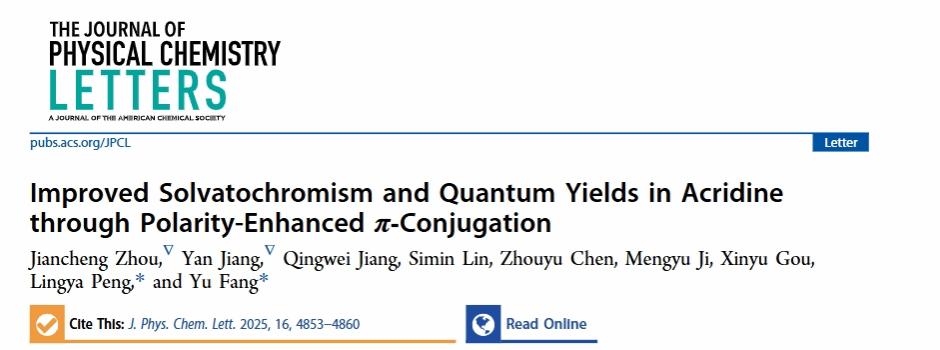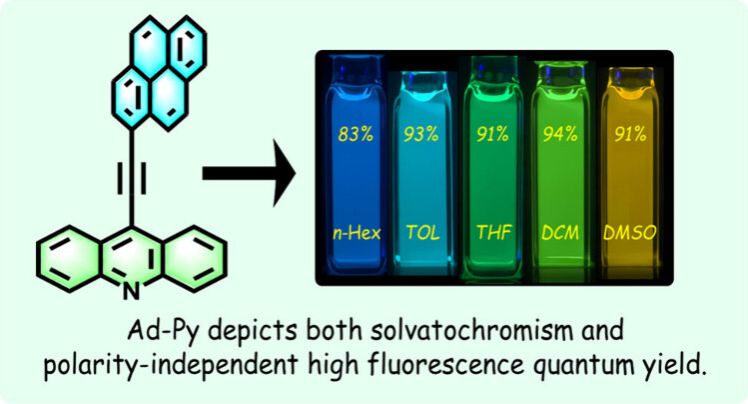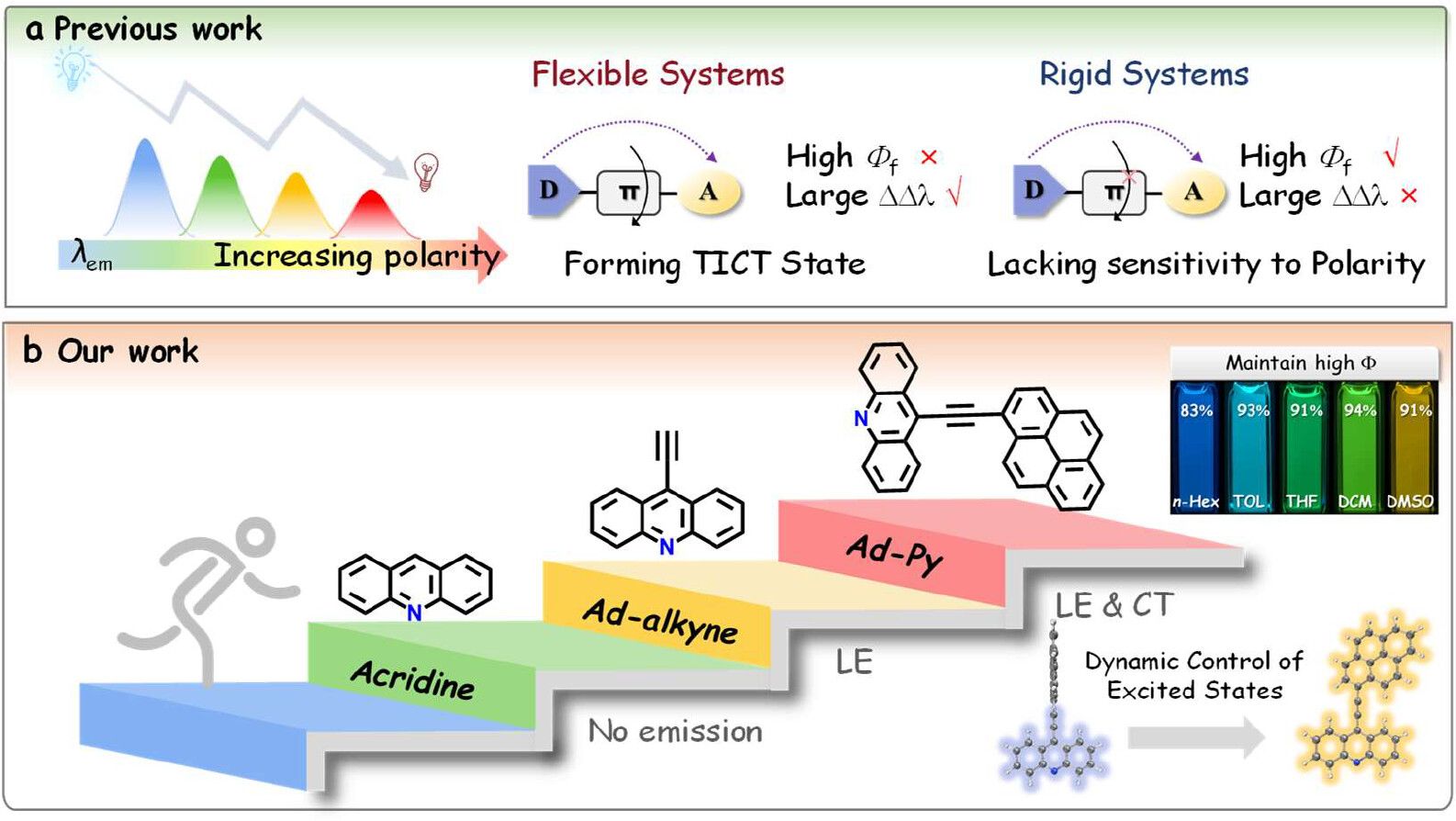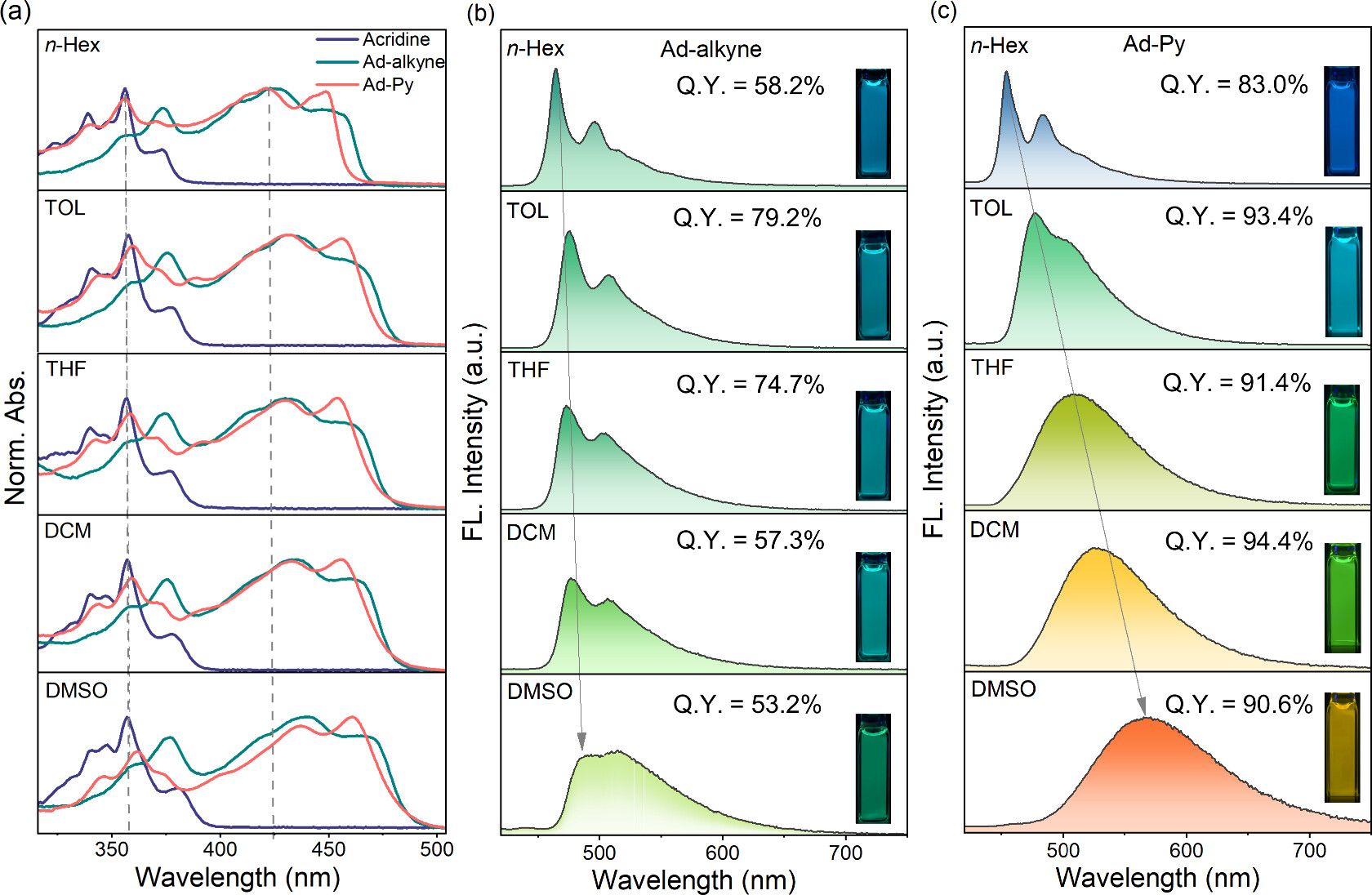
Jiancheng Zhou, Yan Jiang, Qingwei Jiang, Simin Lin, Zhouyu Chen, Mengyu Ji, Xinyu Gou, Lingya Peng, Yu Fang. J. Phys. Chem. Lett. 2025, 16, 4853-4860. DOI: 10.1021/acs.jpclett.5c00803.

The exploration of organic fluorescent dyes has been widely noted due to their extensive applications in bioimaging, optoelectronic devices, and sensing. Significant expansion in the diversity of these compounds has been achieved through modulation of their geometric and electronic structures. Among them, solvatochromic molecules have been recognized as particularly promising non-invasive visualization tools, primarily because of their high sensitivity to microenvironments. Typical solvatochromic dyes, including Nile Red, propanofluorone, and laurofluorone, exhibit notable fluorescence color changes in highly polar environments. However, the application of such dyes in highly polar environments is considerably restricted by their low quantum yields, which are largely attributed to the activation of enhanced non-radiative decay pathways, leading to fluorescence quenching.

Figure 1. (a) Illustrations of the reported strategies for solvatochromism; (b) Schematic representation of the molecular design strategy for Ad-Py.
In this study, an acridine-derived fluorophore, Ad-Py, is introduced, demonstrating significant solvatochromic effects and high fluorescence quantum yields across various solvents. In low-polarity solvents, the locally excited state (LE) is observed to dominate, resulting in high fluorescence quantum yields. In contrast, in high-polarity solvents, the charge-transfer state (CT), promoted by the extension of the π-electron system, plays a critical role in fine-tuning the energy gap and emission wavelength, making Ad-Py highly sensitive to changes in environmental polarity. A delicate balance between these states allows both electronic configurations to be effectively utilized, enhancing radiative transition efficiency while improving environmental sensitivity. Additionally, based on its sensitivity to polarity variations, a fluorescent thin-film sensor for the detection of sulfur dioxide (SO2) has been developed, achieving a detection limit below 10 ppb.

Figure 2. (a) UV-vis absorption spectra of Acridine, Ad-alkyne, and Ad-Py in various solvents (c = 5 × 10-6 M); (b) Fluorescence spectra of Ad-alkyne (λex = 360 nm) in various solvents (c = 5 × 10-6 M). Inset: the photographs of Ad-alkyne in various solvents taken under UV light (λex = 365 nm). (c) Fluorescence spectra of Ad-Py (λex = 360 nm) in various solvents (c = 5 × 10-6 M). Inset: the photographs of Ad-Py in various solvents taken under UV light (λex = 365 nm).
First Author: Zhou Jiancheng, Master’s student, Shaanxi Normal University
Correspondence Authors: Prof. Fang Yu, Lecturer Peng Lingya, Shaanxi Normal University
Full Text Link: https://doi.org/10.1021/acs.jpclett.5c00803
 Latest Updates
Latest Updates






